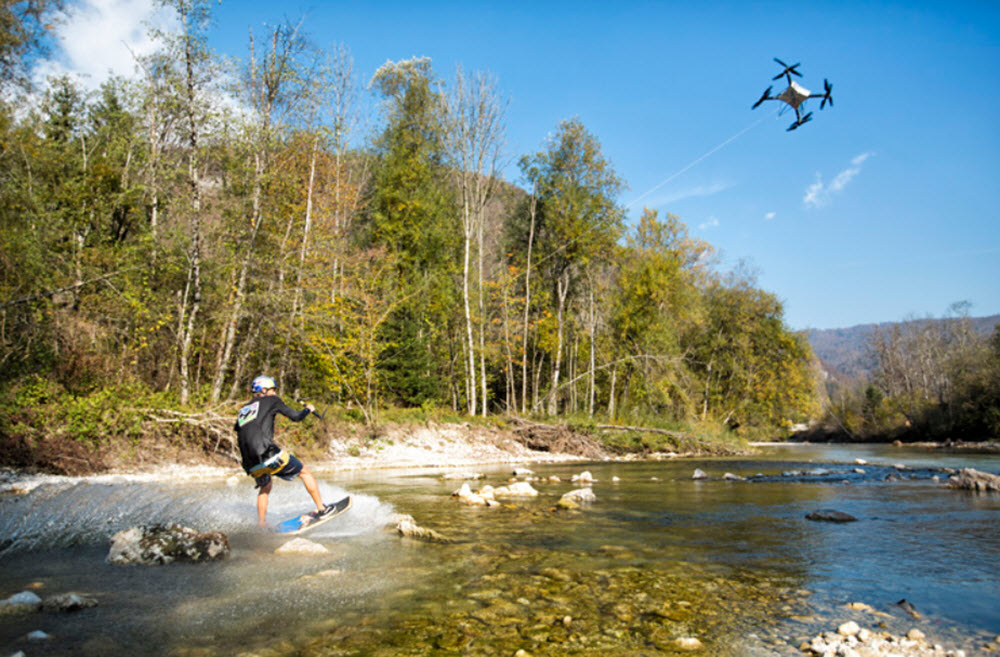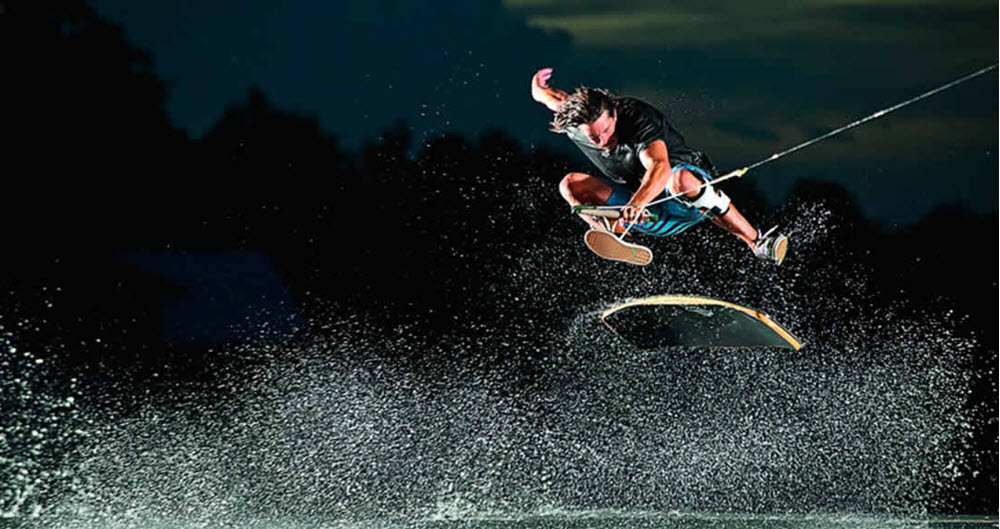Contents [show]
Wakeskating, a sport pioneered by Thomas Horrell, developed out of wakeboarding, and the two sports are quite similar and both tend to use a board manufactured from fibreglass or maple. The major difference is that with wakeskating, the rider is not attached to the board. Therefore, the experience is more similar to skateboarding.

Most wakeskate boards have a grip tape (similar to sandpaper) on the upside, which increases friction and helps the rider stay on the wet board instead of slipping off it. Special wakeskate shoes can be worn to provide even more traction, and protect the sole of the foot from the grip tape.
Some wakeskate boards have foam instead of traditional grip tape. Compared to the sandpaper-like grip tape, the foam is less likely to accidently scratch you if you fall. Some of the boards with foam are quite comfortable to ride barefoot.
Buying a wakeskate
There are many different types of wakeskates available. Here are a few examples of factors that are important to pay attention to when you select a wakeskate, to make sure you get one that is ideal for you.
- Size
- Material
- Deck shape
- Deck surface
- Rocker type
How big should the wakeskate be?
Wakeskates are available in several sizes, and the most important factor when selecting a wakeskate of the right size is the weight of the intended rider. Generally speaking, the small 39 inch wakeskate is not suitable for riders that weigh more than 180 lbs. A 40 inch wakeskate will typically work well for riders in the weight span 180 lbs – 250 lbs. Above 250 lbs, a 41 inch wakeskate is recommended.
A larger wakeskate have more surface area and provides the rider with more stability. Smaller wakeskates are less stable, but this isn’t always a negative thing, as smaller wakeskates tend to be more easy to manoeuvre and flick, especially if they are also lightweight.
Wakeskate materials
A majority of the wakeskates available on the market today are made from either wood or a composite material.
- The typical wooden wakeskate will be covered in marine grade epoxy to protect it. Even with this protection, you can expect the wooden wakeskate to wear out more quickly than a composite wakeskate, as the water causes the wood to break down.
- The typical composite wakeskate will be lighter than its wooden counterpart, and you can expect it to have a longer lifespan. Composite wakeskates tend to be more expensive. Many beginners start out with a wooden wakeskate and upgrade to a composite later, when they know for sure that they are seriously interested in wakeskating. Composite wakeskates often come with a rather generous manufacturers warranty.

Fins
The three most common materials for fins are plastic, fibreglass and aluminium.
- Shallow fins do not track as well as deeper fins.
- Shorter fins must compensate by being be deeper to get the same amount of tracking as longer fins.
- A deeper fin has more drag in the water. It does not release from the water as fast as a shallower fin.
Shoes
Naturally, the shoes must be made from materials that can handle being exposed to water. It is also good if the materials are quick-drying.
Wakeskating shoes typically have holes (in the sole) and channels (through the midsole) through which water can escape.
